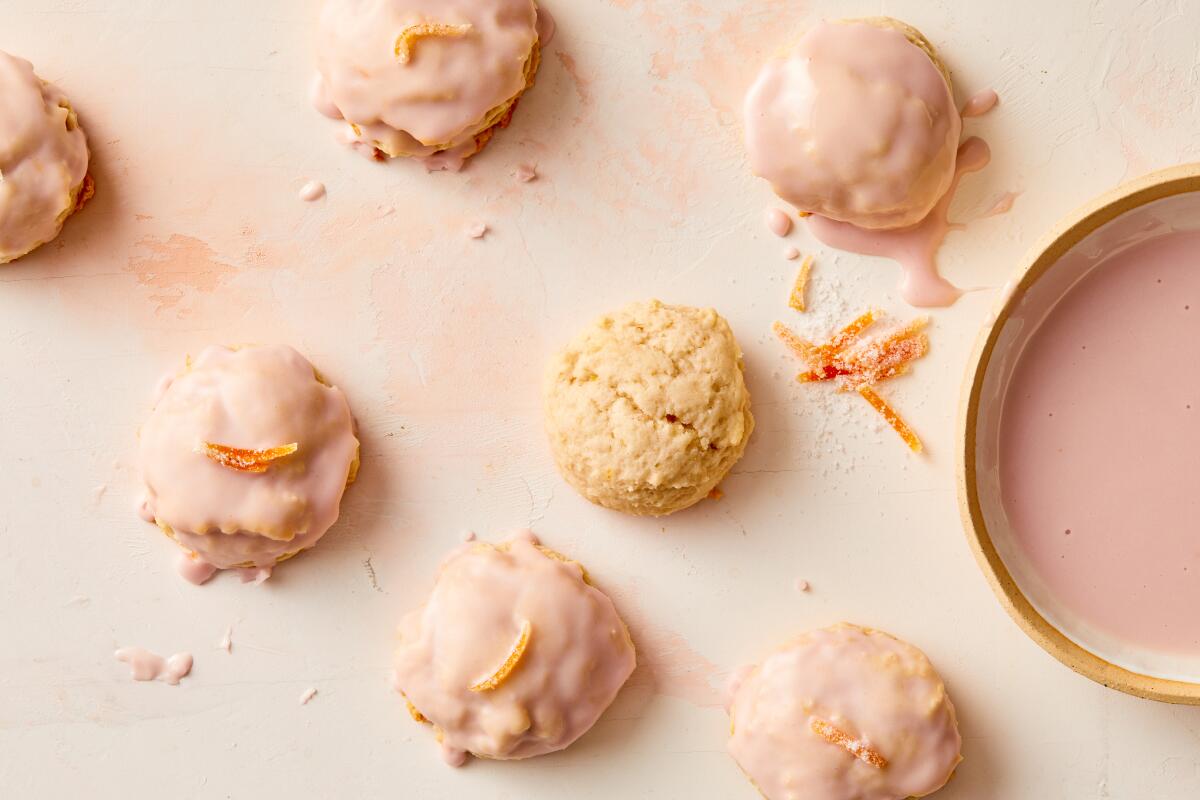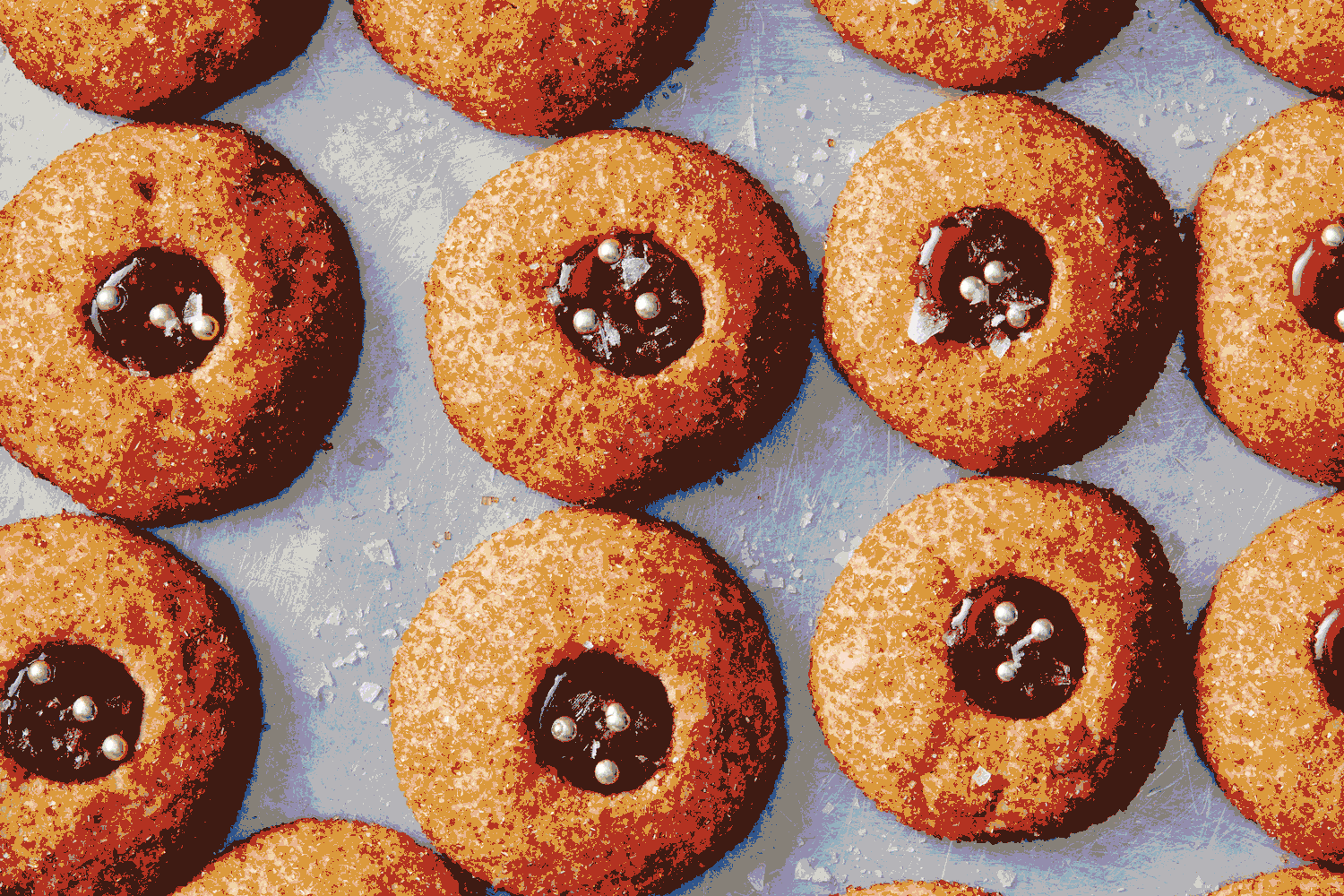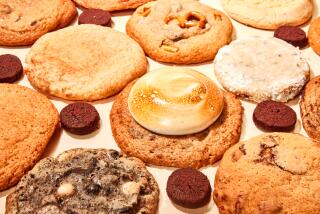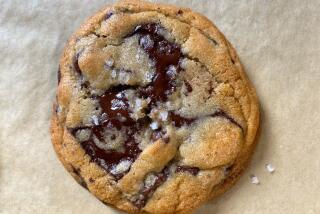12 Days of Holiday Cookies: Pet-Nat Pillows

Often when alcohol is incorporated into cookies or baked goods, it’s with liquor, which has the strength to cut through the butter, sugar and flour. But when I set my sights on making a cookie with pet-nat orange wine — my drink of choice since moving to L.A. — I knew supporting players would need to be incorporated to get the flavor to shine through. Grapefruit zest adds a bitter-sweet tang; grapefruit juice, Greek yogurt and apple cider vinegar all amp up the acidity, a key characteristic in my favorite orange wines. Don’t buy a cheap bottle for these cookies; use an orange or white wine that you’d want to drink (you’re only using 3/4 cup total so think of it as pouring a glass out for a friend). It’s best to use a really sour, really funky orange wine so it stands up to sweetness of this pillowy, cakey cookie.
Our first annual collection of 12 L.A.-inspired holiday cookies.
Pet-Nat Pillows
1 hour 10 minutes. Makes 3 dozen cookies.

Ingredients
- 1 large Ruby Red grapefruit
- 1 ½ cups plus 2 tablespoons granulated sugar, divided
- ½ cup plus 6 to 8 tablespoons pet-nat orange or white wine, divided, plus more as needed
- ½ cup plain Greek yogurt, at room temperature
- 1 tablespoon apple cider vinegar
- 4 cups all-purpose flour (1 pound 2 ounces; see Baker’s Note)
- 1 teaspoon baking soda
- 1 cup unsalted butter, at room temperature
- 1 teaspoon kosher salt
- 5 cups powdered sugar, sifted (20 ounces; see Baker’s Note)
Instructions
- Using a vegetable peeler, peel 2 wide strips of zest (3 to 4 inches long) from the grapefruit and place them in a small saucepan. Add half a cup granulated sugar and half a cup water to the pan and bring to a boil over high heat. Reduce the heat to maintain a bare simmer and cook until the zest is translucent and candied, about 10 minutes. Remove the pan from the heat and let zest cool in the syrup completely.
- Heat the oven to 325 degrees. Line 2 large rimmed baking sheets with parchment paper.
- Using a microplane zester, grate the zest from the rest of the grapefruit into a large bowl. Juice the grapefruit and pour half a cup juice into a glass measuring cup; discard any remaining. Add half a cup wine, the yogurt and vinegar and whisk to combine.
- In a medium bowl, whisk together the flour and baking soda. In the bowl with the finely grated grapefruit zest, add 1 cup granulated sugar, the butter and salt and beat on medium speed of a mixer until light and fluffy, about 3 minutes (see Baker’s Note). Add half the dry ingredients and mix on low speed until almost combined. While mixing on low speed, pour in the liquid ingredients then add the rest of the dry ingredients and continue mixing until the batter is smooth.
- Using a 1-ounce ice cream scoop or 2 tablespoons, scoop the dough into mounds on the prepared sheets, spacing them 2 inches apart.
- Bake the cookies, rotating the baking sheets front to back and top to bottom halfway through, until lightly browned on the bottom, 20 to 22 minutes. Let the cookies cool on the baking sheets for 1 minute, then transfer to a rack and let cool completely.
- While the cookies cool, drain the two strips of grapefruit zest from the syrup and transfer to a cutting board; reserve the syrup. Thinly slice the strips from short end to short end then transfer to a small bowl and mix with the remaining 2 tablespoons granulated sugar to coat.
- In a medium, shallow bowl, whisk the powdered sugar with the remaining 6 tablespoons wine and 2 tablespoons reserved syrup until smooth. The glaze should be pourable but thick; add up to 2 more tablespoons wine to thin, if necessary.
- Dip the top of each cookie in the glaze, letting the excess drip back into the bowl. Transfer the cookies to a rack, top with 1 or 2 strips of candied grapefruit zest while the glaze is still wet, and let stand until the glaze sets, about 10 minutes.
Make ahead: The cookies can be stored in an airtight container at room temperature for up to 3 days.
Baker’s note: When measuring flour or powdered sugar, spoon it into a dry measuring cup and level off the excess. Scooping compacts the ingredients, resulting in dry baked goods. And if using a stand mixer, use a rubber spatula to scrape the bottom of the bowl and the paddle after beating the butter and sugar together and after the dough is mixed to ensure the ingredients are evenly mixed throughout.
More to Read
Eat your way across L.A.
Get our weekly Tasting Notes newsletter for reviews, news and more.
You may occasionally receive promotional content from the Los Angeles Times.












